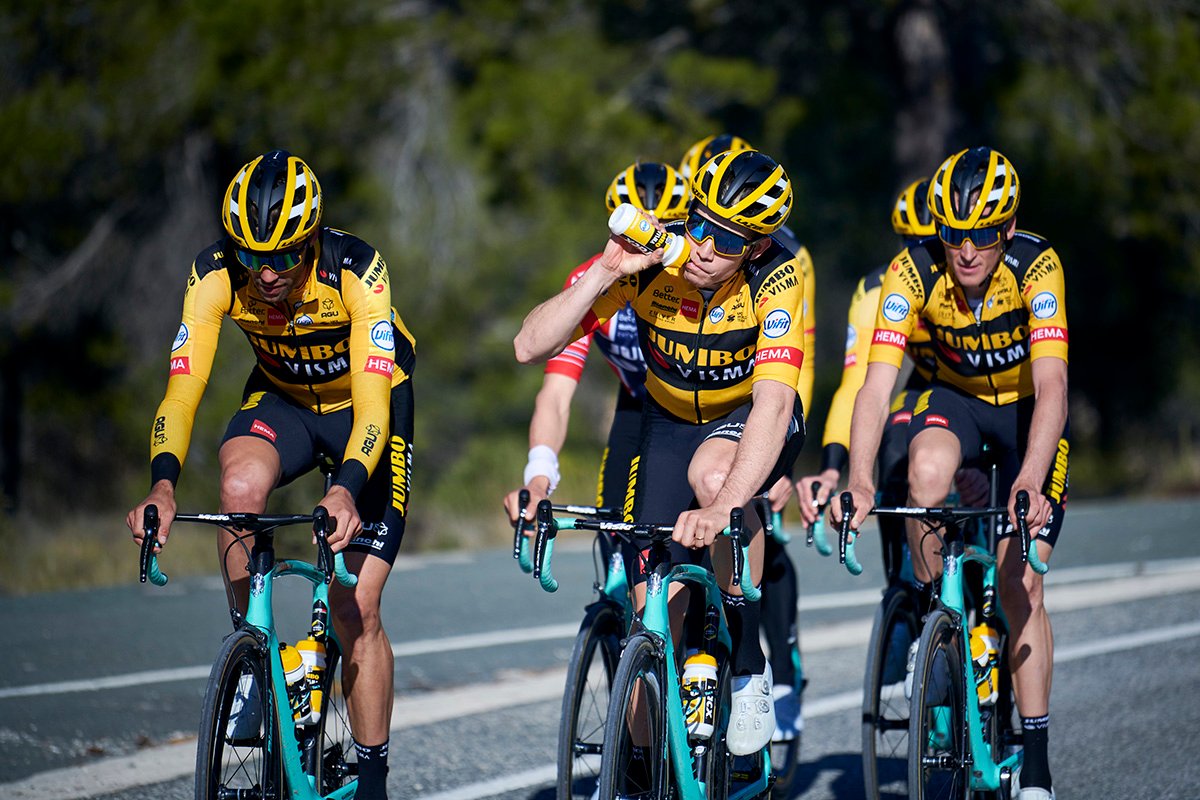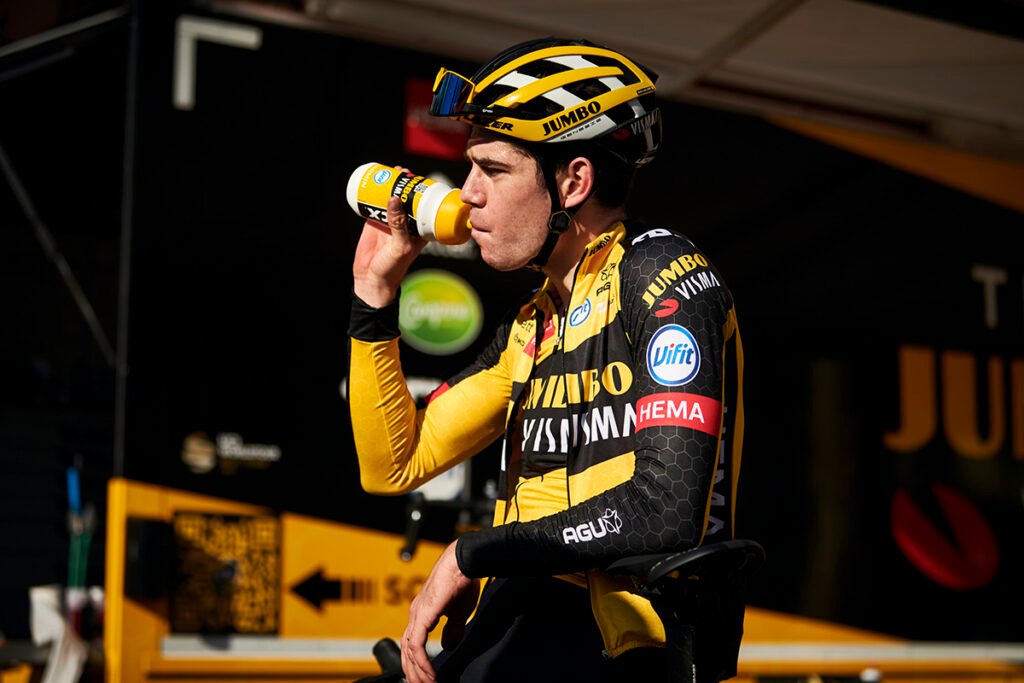How Nutrition Can Help You Become a Better Cyclist

June 2, 2021
Most cyclists put a lot of effort in their rides, training schedules, bike maintenance and more. But are you putting enough focus on what you’re putting into your body? Pro cycling team Jumbo-Visma credits nutrition as a big contributor to their current success. Read on to learn more about the importance of nutrition and how it can contribute to becoming a better cyclist.
Back to Basics
According to Martijn Redegeld, head of nutrition for both the male and female teams at Jumbo-Visma, performance can be improved with a good nutrition plan.
“We have been working on this area for about 5 years now, and it certainly has been a key factor for our great successes of the past years. But we are not there yet: The developments in the world of nutrition follow up quickly, and there is still a lot to be learned and gained.”
The philosophy within the team is quite simple: Basic nutrition has become central again.
“The focus on this had completely disappeared in the cycling world,” Redegeld says. “Everyone was busy with exotic supplements, powders and pills for the magical effect. But nobody cared about the pure everyday fuel that was used, the amount of protein to recover and so on. In fact, there is a gain of 80-90% that can be derived from basic nutrition. This sounds simple, but getting it right, and getting it tailored to your specific training or race each day, is another thing. It requires a lot of knowledge and understanding within the team.” The riders were a bit skeptical at the beginning but then quickly realized the importance of it. They have more energy during their training sessions, they recover faster and are able to deliver that top performance again the next day. They also feel much more vital in the third week of a Grand Tour, like the Tour de France, for example.
The keyword for the nutrition philosophy within Jumbo-Visma is consistency. “A good nutrition plan is not something you can do for just a couple days and then pay no attention to it anymore,” Redegeld explains. “We design a year-round daily nutrition schedule for every rider. Before the start of the season, we check the race program and the weight of each rider. In this way we can make an individual plan where one chooses, for example, to keep the weight steady, where we need to gain or lose weight. If a rider will join a stage race with a lot of climbing, then we know that less weight is important for that period of time. Besides the calendar, we also keep track of the health of the riders, and how we can create the maximum training gain based on nutrition.”
Pro tip: “One of the biggest mistakes many make is to eat a big breakfast, start cycling an hour later and then in the first hours of the ride they don’t eat because they think they can still go ahead,” says Redegeld. ”But in the meantime, the fuel supply in the muscles is already declining. So if you’re making a long ride, start eating already in the first hour and keep eating systematically. Just take a gel, bar or water bottle every hour on a standard ride. During an intensive or longer ride, increase it to two per hour. Keep doing this, even if you are already close to home at the end of your ride. In this way you keep your fuel storage as high as possible with the aim of not reaching the bottom of it.”
Another key factor? Hydration. During your ride, make sure you drink evenly, just like eating. On average this should be 500 ml per hour (roughly one 20-oz. water bottle), though it varies from person to person and depends a lot on how much sweat you lose.
Pro tip: How do you know if you drank enough during your ride and how much extra you have to drink when home? Redegeld has an easy trick for this. “The best way to determine this is as follows: stand on the scale before and after your ride. You’ll notice that you always lose some weight, and this is entirely due to sweat loss. If you’ve lost 1 kg (2 lbs), then you have lost 1 liter of sweat. You then have to drink a little more (1.5 liters or roughly 2.5 20-oz. water bottles) to be able to compensate for it. It’s not necessary to immediately drink this right after the ride but pay attention to this in the hours after. This is especially important if you’ll also exercise in the following days.”
There’s a rule of thumb to lose a maximum of 2% of your body weight during a ride. When your weight has decreased about 4%, then you know you’re doing something wrong. You may have noticed that you were a bit dazed or maybe had some muscle cramps. Pay attention to your nutrition schedule for the next time, because it doesn’t only drop your performance — you could also pass out.

A Successful Race Plan
On some tough race days, riders can burn up to 8,000 calories and beyond. Unfortunately, it is impossible to consume the same number of calories during a race. This has to do with the limiting factor of the human body: It can roughly absorb 90 grams of carbohydrates…
